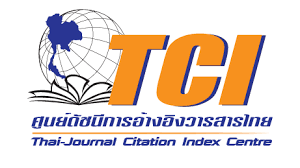Cerebrospinal Fluid Flow Analysis in Prepontine Cistern, Foramen Magnum and 5th Cervical Spine Levels: Temporal and Spatial Patterns at MR Imaging in Volunteers and in Patients with Chiari I Malformation
Cerebrospinal Fluid Flow Analysis in Prepontine Cistern, Foramen Magnum and 5th Cervical Spine Levels: Temporal and Spatial Patterns at MR Imaging in Volunteers and in Patients with Chiari I Malformation
Abstract
Background and Purpose: The neurological signs and symptoms in Chiari I malformation patients are
related to cerebrospinal fluid (CSF) flow obstruction at the foramen magrum. Previous studies show
signilicantly higher peak CSF velocity at the foramen magnum level in these patients than in the normal
population. However, recent studies report no significant difference of peak CSF velocity at the foramen
magnum between symotomatic and asymptomatic Chiari I groups and suggested further studies of CSF
flow outside the foramen magnum for better patient classication. The purpose of this study was to
evaluate and compare CSF flow patterns in Chiari I patients and in healthy controls at the prepontine
cistern, foramen magnum, and 5th cervical spine (C5) levels.
Methods: Five patients and ten healthy control volunteers were studled with a phase-contrast MRI at
these levels through 20 phases of a cardiac cycle. The CSF flow patterns were analyzed for inhogeity
using the flow velocity diffence between the areas anterior and posterior to the spinal cord, the synchronous
bidirectional flow, and the preferential flow direction.
Results: The peak systolic velocity means in the patients were higher than those in the controls for all
three levels: However, statistical signicance occurred only at the foramen magnum level. For all three
levels, the flow spatial and temporal variations (flow nodes and jets and consecutive images with synchronous
bidirectional flows) were more evident in the patients than in the controls.
Conclusion: No significant diffence of the CSF flow occurs at the prepontine cistem and C5 levels
between the patients and controls. Therefore, the CSF flow studies outside the foramen magnum may not
be effective for patient evaluation
Downloads
Metrics
References
Milhorat TH, Chou MW, Trinidad EM, et al. Chairi I
malformation redefined: clinical and radiographic fings
for 364 symptomatic patients. Neurosurgery 199999;44:
-17.
Elster AD, Chen MYM. Chiari I malformations: clinical
and radiologic reappraisal. Radiology 1992;183:347-53.
Barkovich AJ, Wippold FJ, Shermam JL, Citrin CM.
Significance of cerebellar tonsilar ectopia on MR. AJNR
Am J Neuroradiol 1986;7:795-99.
Meadows J. Kraut M. Guamieri M, et al. Asymptomatic
Chiari I malformations identied on magnetic resonance
imaging. J Neurosurg 2000:92:920-6.
Wolpert SM, Bhadelia RA, Bogdan AR, et al Chiari I
malformation: assessment with phase-contrast velocity
MR. AJNR Am J Neuroradiol 1994:15:1299-308.
Roldan A. Wieben O. Haughton V. et al. Characterization
of CSF hydrodynamics in the presence and absence of
tonsillar ectopia by means of computational flow analysis.
AJNR Am J Neuroradiol 2009:30:941-6.
Quigley MF, Iskandar B. Quigley ME, et al. Cerebrospinal
fluid flow in foramen magnum: temporal and spatial
patterns at MR imaging in volunteers and in patients with
Chiari I malformation. Radiology 2004:232:229-36.
Hofman E. Warmuth-Metz M. Bendzus M. et al. Phase-
contrast MR imaging of the cervical CSF and spinal cord:
volumetric motion analysis in patients with Chiari I
malformation. AJNR Am J Neuroradiol 2000:21:151-5.
Iskandar BJ, Haughton V. Age-related variations in peak
cerebrospinal fluid velocities in the foramen magnum.
J Neurosurg 2000:103(6 suppl):508-11.
Haughton VM. Korosec FR. Medow JE. et al. Peak systoilc
and diastolic CSF velocity in the foramen magnum in
adult patients with Chiari I malformations and in nomal
control participants. AJNR Am J Neuroradiol 2003:24:
-76.
Iskandar BJ, Quigley M. Haughton VMM, Foramen magnum
cerebrospinal fluid flow characteristics in chith
Chiari I malformation before and after craniocervical
decompression, J Neurosurg 2004:101( 2 suppl):169-78.
Heiss JD, Patronas N, DeVroom HL, et al. Elucidating the
pathophysiology of syringomyelia J Neurosurg 1999999:
:553-62.
Pinna G. Alessandrini F, Alfieri A, Rossi M, et al. Cere-
brospinal fluid flow dynamics study in Chiari I malforma-
tion: implications for syrinx formation. Neurosurg Focus
:8(3):E3.
Dolar TM, Haughton VM, Iskandar BJ, et al. Effect of
Craniocervical Decompression on Peak CSF Velocities in
Symptomatic Patients with Chiari I Malformation. AJNR
Am J Neuroradiol 2004;25:142-5.
Krueger KD. Haughton VM. Hetzel S. Peak CSF Velooities
in Pattients with Symptomatic and Asymptomatic Chiari I
Malformation, AJNR Am J Neuroradiol 2010:31:1837-41.
Downloads
Published
How to Cite
Issue
Section
License
Copyright (c) 2012 The ASEAN Journal of Radiology

This work is licensed under a Creative Commons Attribution-NonCommercial-NoDerivatives 4.0 International License.
Disclosure Forms and Copyright Agreements
All authors listed on the manuscript must complete both the electronic copyright agreement. (in the case of acceptance)













